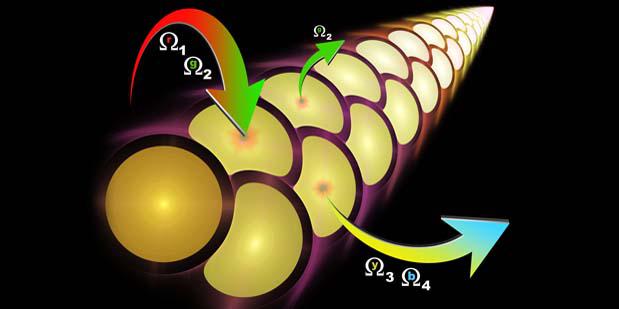DARPA to Study Metamaterials
The Defense Advanced Research Projects Agency (DARPA) has announced a new program designed to better understand and ultimately improve metamaterials. The program could lead to improvements in a number of areas, including imaging, thermal control and frequency conversion.
Metamaterials, also known as structured materials, make use of patterns of strongly interacting wavelength or sub-wavelength-sized elements and present new properties that have caused long-understood scientific laws to be rewritten, according to a DARPA announcement. The materials have opened up new options for controlling electromagnetic waves in many technological arenas, including imaging, thermal control and frequency conversion. Specific applications include night vision, heat reflection and management in aircraft engines, and temperature regulation of electronics on satellites in the hot-and-cold extremes of space.
The Nascent Light-Matter Interactions (NLM) program seeks to expand the state of the art in already-observed phenomena while pointing to never-before-realized and new functionality. The program could result in a better understanding of the physics of 2-D and 3-D structured materials and a systematic design approach for controlling the electromagnetic waves, DARPA officials say.
“Recent advances in our understanding of light-matter interactions have revealed nascent concepts that could yield new materials with properties way beyond anything we have now,” Mike Fiddy, DARPA program manager, said in the written announcement.
The NLM program also might help engineers design better materials, for example, that automatically block the frequency of a laser if it is shined directly into the eye. Or it could improve management of extremely hot temperatures, such as those found in turbine aircraft engines. New engineered materials could help precisely manage temperatures in critical hot parts of the engine, which in turn could lead to more efficiency, reducing fuel and maintenance costs.
“Similarly, on satellites, as they orient toward the sun they can get ‘cooked’ and when they are out of the sun they are very cold,” Fiddy said. “Those big temperature extremes have to be controlled somehow in the satellite’s design. … A general approach to solving this problem could be beneficial for keeping computer chips cool while at the same time opening up new ways to harvest electromagnetic energy.”
The NLM program will unfold in three phases. The first will challenge performers to develop a model and show that it can predict new phenomena and serve as a design tool. The second phase will push researchers to test the models’ actual utility for identifying new materials useful for specific applications. The goal for Phase 3 is to identify specific challenge problems and tie selected performers and their respective focus and applications to the operational needs of DOD stakeholders.
DARPA announced a webcast Proposers Day for potential NLM proposers on November 28. A Special Notice with registration information and other details is available here: https://go.usa.gov/xnWut. A Broad Agency Announcement (BAA) solicitation will be posted on FBO in the near future.





Comments